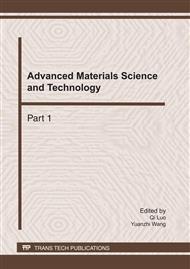p.456
p.462
p.468
p.474
p.480
p.485
p.489
p.495
p.501
Dynamics of Photodecomposition Biodegradation and Volatilization Behaviors of Petroleum on Soil Surface
Abstract:
petroleum contamination is a very common environmental problem. Soil as the protective of groundwater, its remediation relates the security of groundwater, so we simulated the remediation of surface soil. From the experiment, we found that the natural attenuation of contaminated soil is a complicated process. The more processes contained, the easier petroleum attenuated. These processes can accelerate some of components reduce. Volatilization can only attenuate 24.85% petroleum, but if volatilization is coupled with biodegradation, that 89.99% petroleum can be attenuated. With the help of photodecomposition, 97.26% petroleum can be consumed. Volatilization action is a kind of physical attenuation mode, and it may not make some of components which are hard to volatilize into the air. Biodegradation action is a kind of biologic process which depend on the activity of bio-enzyme, and it need microbe compose a steady population. Photodecomposition is a kind of photochemical attenuation mode. If there are three or more attenuation processes exist, the powerful process will play a lead role, such as photodecomposition and biodegradation. From the result we can obtain that 59.83% contribution rate was caused by photodecomposition, and it can decay more petroleum than biodegradation and volatilization.
Info:
Periodical:
Pages:
480-484
Citation:
Online since:
January 2011
Authors:
Price:
Сopyright:
© 2011 Trans Tech Publications Ltd. All Rights Reserved
Share:
Citation:


